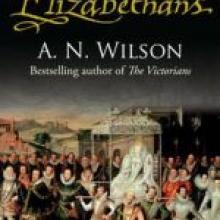
By the time Mary died in 1558, the country was ready for further change: Mary's marriage to King Philip of Spain had been extremely unpopular and the heresy hunts of the Inquisition ensured she was hated throughout the land. Could Henry's third child, Elizabeth, deliver something better?
The answer, as we know with hindsight, was in the affirmative.
Elizabeth had a natural advantage over Mary, good looks. Her Welsh colouring of pale, almost translucent, skin and red hair were in marked contrast to the dark-haired Mary, who had not aged well. The new queen made use of those looks as she travelled from Hatfield House to London, showing herself to as many of her subjects as possible.
This ride was, says A.N. Wilson in The Elizabethans, like a piece of theatre. Being good-looking and visible was part of her success, as was her use of pageantry, on which much was spent despite Elizabeth's famous parsimony, but that paled beside the queen's formidable intelligence. She read and spoke fluently in Latin, Greek, French, Spanish, Italian and English, and had a little Welsh, Wilson notes.
This was the framework for the Elizabethan era, the age that Wilson sees as ending with World War 2 and England's consequent fall from its long-held status as a world power.
The Elizabethans begins with a chapter on Ireland, "The Difficulty", relating how the island was regarded as ungovernable in the 16th century, the factors and factions involved, but this essay is oddly placed. Despite Wilson's assertion that attitudes and actions were entirely compatible with Elizabethan attitudes to cultures that got in the way of their progress, it reads like an afterthought that had no home in the main part of the book.
That is not to say it is not interesting, even fascinating, as is the chapter that follows with its descriptions of swashbuckling seafarers such as Francis Drake and his cousin, John Hawkins. Again, this chapter seems oddly placed, although can be justified in giving an explanation - the barbarous cruelty of the Spanish Inquisition to the English sailors left behind by Hawkins in Mexico - for the anti-Catholic attitudes prevalent in England for centuries.
The remainder of The Elizabethans traces Elizabeth's reign and the fortunes of the wise and handsome men with whom she always surrounded herself, men such as William Cecil (wise) and Robert Dudley (handsome).
Of particular interest is the chapter on the Armada. Was it really the great sea battle we were taught or was it merely a blip in European history?
Even had the weather made such an Elizabethan Pearl Harbour possible, it was never logically feasible, Wilson claims.
The book also clearly demonstrates the queen's ruthlessness, notably in her treatment of the Earl of Essex, beheaded in 1601, the victim of the old lady. Ironically, the Earl of Southampton, who was imprisoned in the Tower of London with Essex, was spared and under James I, who followed Elizabeth, had all his honours and privileges restored.
The queen died two years after Essex, dying in 1605 after more than 44 years in power, and at her request was buried in Westminster Abbey alongside her half-sister, Mary.
Although a royal family tree would have helped in understanding the complexities of Tudor inheritance, The Elizabethans is a splendid, easy-to-read overview of Elizabeth's reign from a prolific and always enjoyable writer.
• Gillian Vine is a Dunedin writer.











